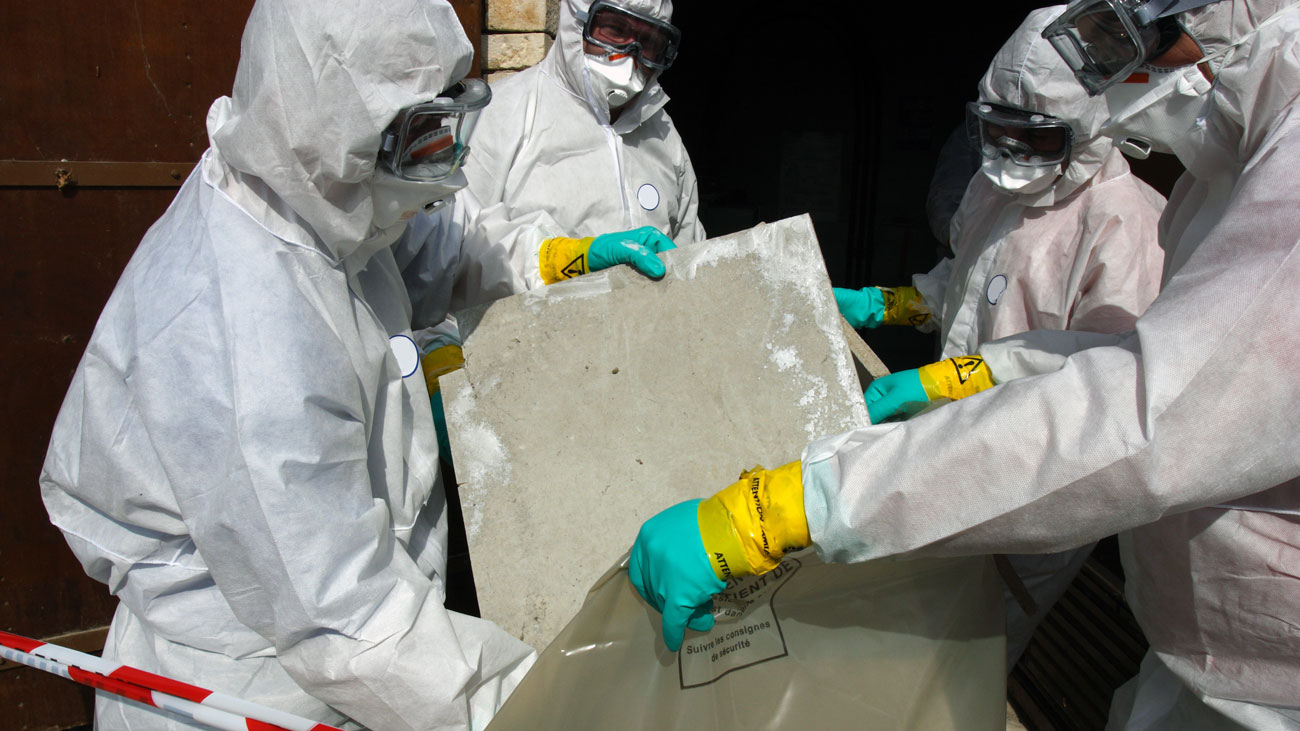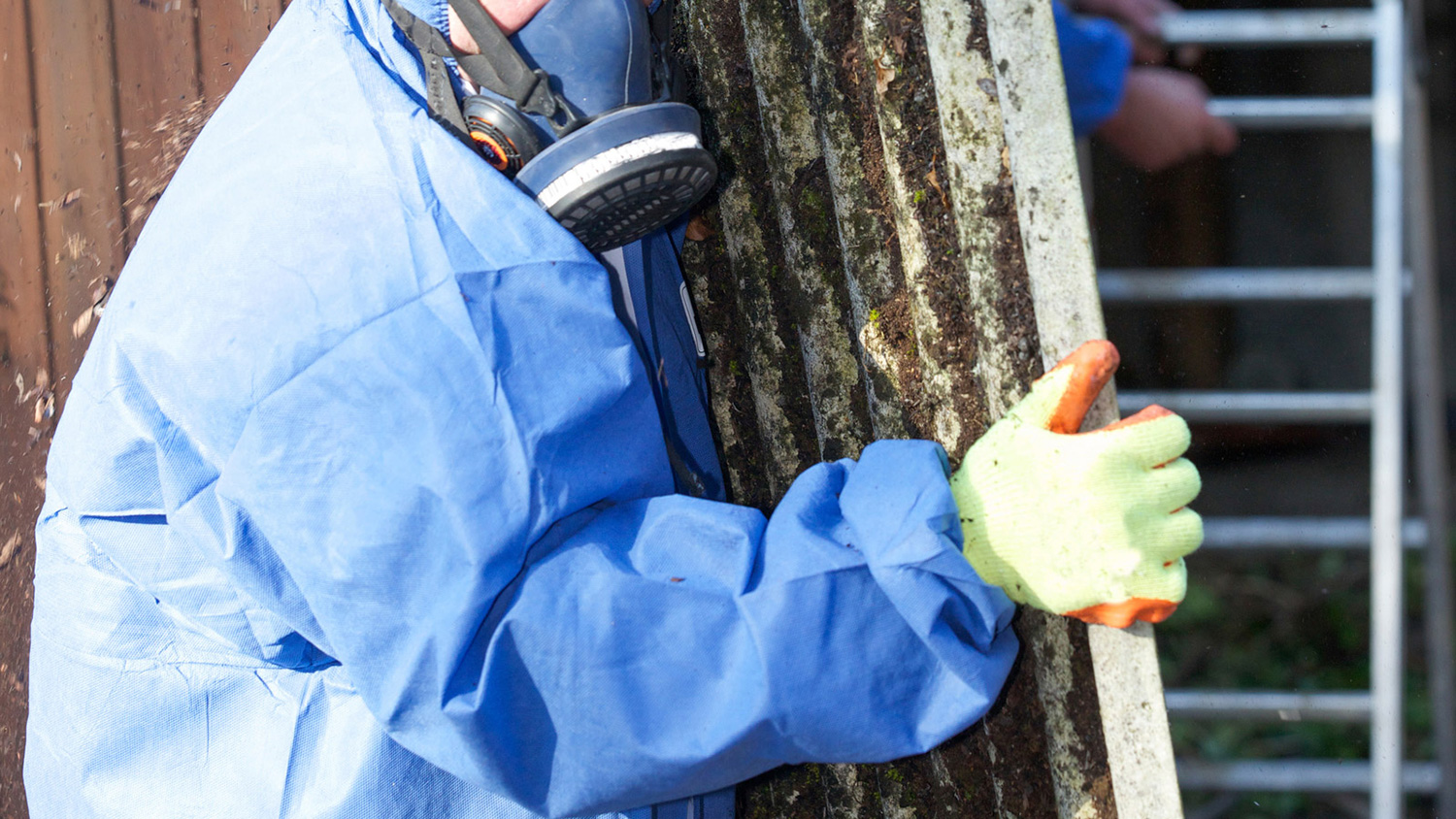
Lives depend on asbestos action, says IOSH
The UK government needs to take more action to prevent thousands of people dying from asbestos exposure every year – 25 years on from the deadly material being banned – says the Institution of Occupational Safety and Health (IOSH).
Despite the ban, an estimated 300,000 non-domestic buildings built before 1999 still contain asbestos. With many of these buildings requiring refurbishment, in addition to the drive for net zero meaning many of them being retrofitted, tradespeople and building users will be put at risk if it isn’t managed properly.
In line with Global Asbestos Awareness Week (1-7 April), IOSH has renewed its call on the government to work with policymakers, regulators, employers and worker representatives to increase awareness.
Ruth Wilkinson, Head of Policy and Public Affairs at IOSH said:
“We know that about 5,000 people die from asbestos-related diseases every year in the UK. While the cause of their illness was likely exposure from decades ago, we believe that people are still being exposed today, putting them at risk of terminal cancers such as mesothelioma in the years to come. This is unacceptable. What is of significant concern is the lack of consistency in managing asbestos among duty holders and a lack of awareness and knowledge about it among those who are coming into contact with it, particularly in smaller businesses.”
The Work and Pensions Committee has previously called for a 40-year deadline to be set for the removal of asbestos from all public and commercial buildings. This followed an inquiry, to which IOSH contributed evidence. The government swiftly rejected this proposal, in July 2022, promoting IOSH to call for a combined effort to tackle the asbestos issue.
Ruth added:
“While we supported the committee inquiry and the recommendations, we did highlight that there are still hazards and risks associated with removal. What we’d really like to see is a collective effort by policymakers, government, regulators, employers and worker representatives to address this. Within the UK this can be part of a national strategic plan which is aligned to the built environment and net zero initiatives, as is it expected that buildings will require maintenance, renovation or demolishing as part of that agenda. Such a plan must therefore have a focus on duty holders, the duty to manage asbestos, and the competence of individuals and include the development of clear guidance around managing asbestos. It should also include enforcement. Also essential to it is improved training for employees which raises awareness of the dangers of exposure, informs them how to deal with asbestos and what to do if they come across it. Nearly two years have now passed and there hasn’t been any progress. Action is needed now. People’s lives depend on it.”
This is the 20th Global Asbestos Awareness Week. It is organised by the Asbestos Disease Awareness Organization, which was founded by Linda Reinstein and Doug Larkin in 2004 and is based in California. The week aims to correct misconceptions about asbestos as well as raise awareness and education to the public. It brings together a diverse group of experts, victims and advocates from across the globe to share knowledge, experiences and strategies for combating the asbestos threat.
Linda Reinstein, President and CEO of the Asbestos Disease Awareness Organization said:
"This Global Asbestos Awareness Week, as we join forces again with IOSH and BOHS and echo the calls for heightened asbestos awareness, we embody the very essence of collective action. It's a reflection of our shared dedication to not only preserving the health and safety of workers but also safeguarding their families and communities. Our collaboration signifies more than a partnership; it's a powerful alliance against occupational hazards. By pooling our knowledge, resources, and passion, we send a clear message: the fight against asbestos is a universal cause, and together, we are an unstoppable force for change and prevention."
Any changes to asbestos guidance and legislation are likely to have significant consequences for duty-holders when managing asbestos on their premises. In terms of health and safety issues, greater regulation will place more onus on organisations to demonstrate that they have done all that is ‘reasonably practicable’ to avert the risk of exposure to asbestos. Organisations do not have to cause actual harm in order to fall foul of health and safety legislation; the mere creation of a risk of harm is sufficient for enforcement action to be taken by the HSE, including a prosecution.
The UK Asbestos Training Association (UKATA) has raised concerns around the lack of asbestos training that has been undertaken since the start of the COVID-19 pandemic.
Said Craig Evans, Chief Operating Officer of UKATA:
“Our concern is that the fabric of the many workplaces and public buildings that have been closed during the COVID-19 outbreak will have declined. The very people who manage the buildings may have been furloughed and therefore they will not have been inspected for deterioration of any asbestos present. This increases the risk of exposure to deadly asbestos fibres for the buildings’ users. The latency period of asbestos, coupled with a substantial drop in training numbers, could mean that the UK will be facing a greater amount of deaths from asbestos over the next 15-60 years. It is now vitally important that all building managers and appointed persons ensure that their asbestos training is up to date. These are difficult times, but this is a matter of life or death.”
Duty to manage training is a legal requirement, however industry figures show the number of workers who have undertaken asbestos training since March 2021 has steeply declined.
International Workplace’s Asbestos Awareness training course has been designed to help people understand how to manage asbestos in the workplace and recognise the risks. The content of the training is stipulated in the L143 Approved Code of Practice for the Control of Asbestos Regulations (CAR) 2012. The course is suitable for anyone liable to disturb the fabric of a building or supervising those people. This would include but not limited to maintenance and repair staff, FM operatives, electricians, plumbers, gas fitters, IT installers and fire alarm cablers. Find out more here.



